Combined Plots
Explains how to combine several plots, e.g. plotting on the top of an inverse pole figure some important crystal directions.
General Principle
In order to tell MATLAB to plot one plot right on the top of an older plot one has to use the commands hold all and hold hold off. Let's demonstrate this using a simple example.
plot([2 2]) hold all plot([1 3]) hold off
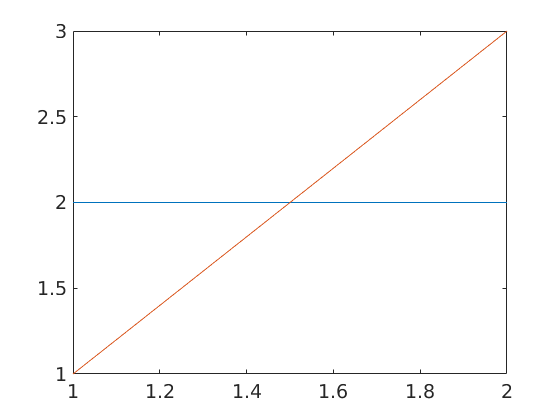
Combine Different EBSD Data
First, we want to show up two different EBSD data sets in one plot
let's simulate some EBSD data
cs = crystalSymmetry('-3m');
odf = unimodalODF(orientation.byEuler(0,0,0,cs));
ori = calcOrientations(odf,100);
ori_rotated = calcOrientations(rotate(odf,rotation.byEuler(60*degree,60*degree,0*degree)),100);plot them as a scatter plot in axis / angle parametrized orientation space
scatter(ori) hold all scatter(ori_rotated); hold off
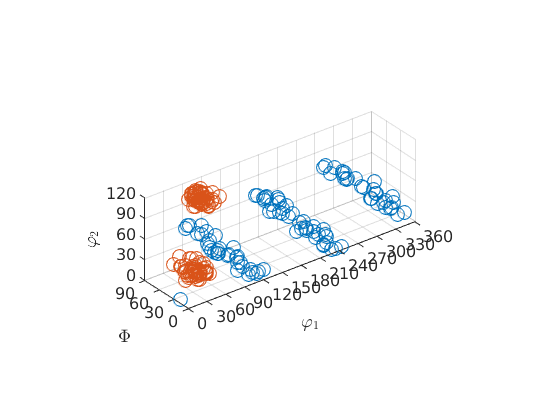
a second way would be to superpose the pole figures of both EBSD data sets.
h = [Miller(0,0,0,1,cs),Miller(1,0,-1,0,cs)]; plotPDF(ori,h,'antipodal','MarkerSize',4) hold all % keep plot plotPDF(ori_rotated,h,'MarkerSize',4); hold off % next plot command deletes all plots
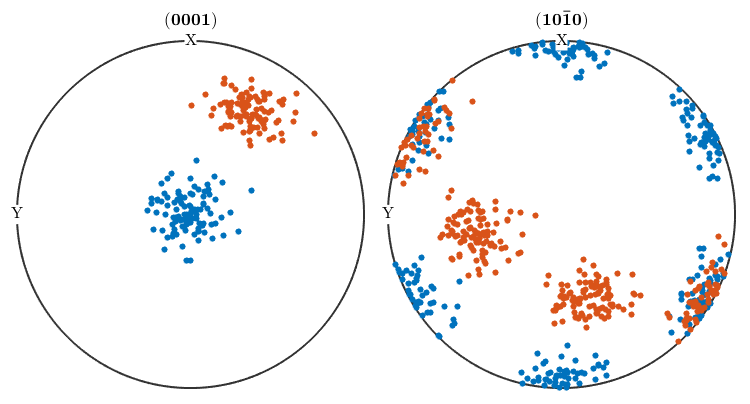
Combine countoured pole figures (smooth ODF plots) with EBSD Data Scatter Plots
You can also combine a contour plot of a model ODF with a scatter plot of single orientations.
plotPDF(odf,h,'antipodal','contourf','grid') mtexColorMap white2black plot(ori,'DisplayName','EBSD 1',... 'MarkerSize',5,'MarkerColor','b','MarkerEdgeColor','w','add2all') plot(ori_rotated,'DisplayName','EBSD 2',... 'MarkerSize',5,'MarkerColor','r','MarkerEdgeColor','k','add2all'); legend('show','location','northeast')
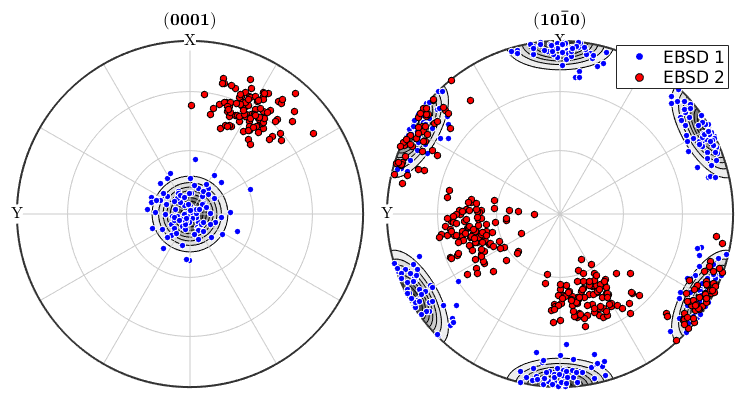
and, of course, you can do the same with ODF plots:
plot(odf,'sections',8,'contourf','sigma') mtexColorMap white2black plot(ori,'MarkerSize',6,'MarkerColor','b','MarkerEdgeColor','w','add2all') plot(ori_rotated,'MarkerSize',6,'MarkerColor','r','MarkerEdgeColor','k','add2all');
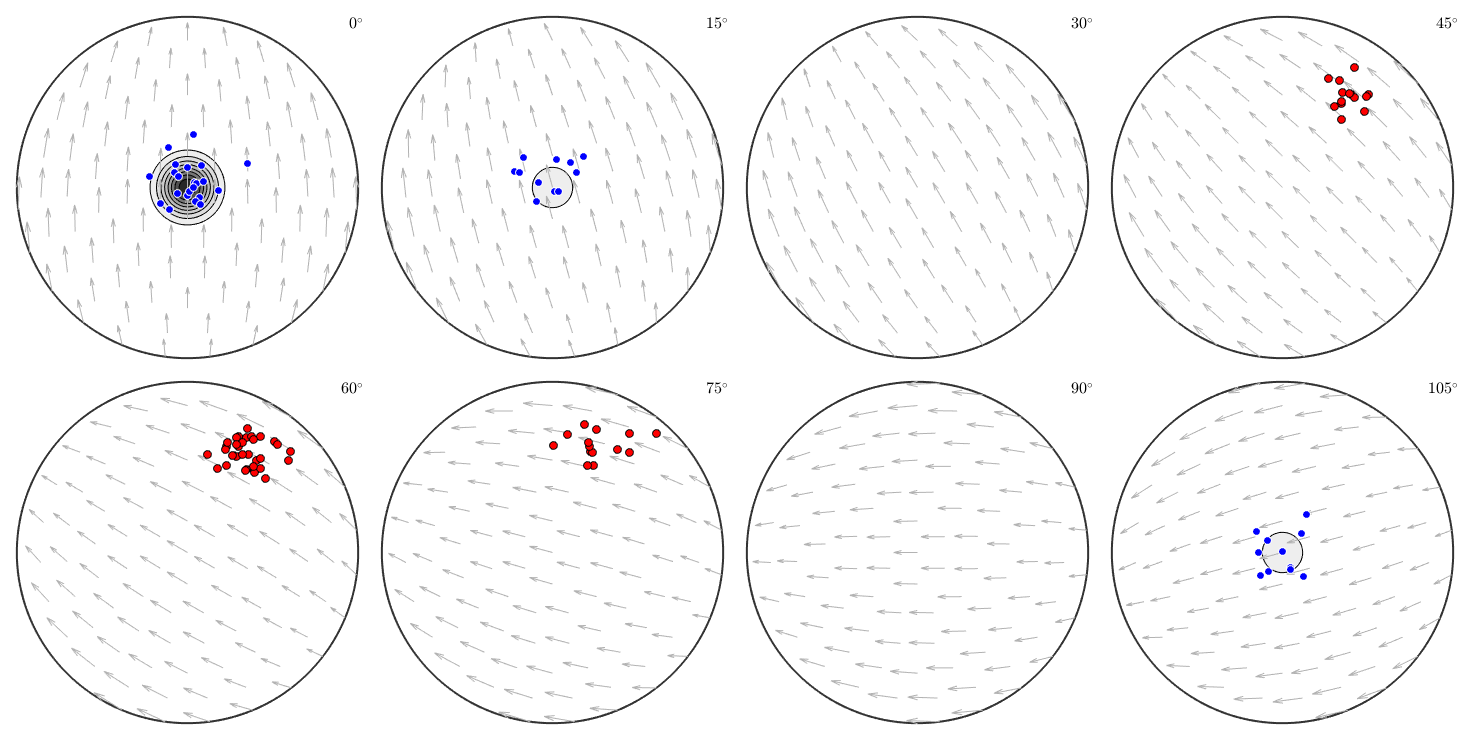
Add Miller Indices to an Inverse Pole Figure Plot
Next, we are going to add some Miller indices to an inverse pole figure plot.
plotIPDF(odf,xvector,'noLabel'); mtexColorMap white2black hold all % keep plot plot(Miller(0,0,0,1,cs),'symmetrised','labeled','backgroundColor','w') plot(Miller(1,1,-2,0,cs),'symmetrised','labeled','backgroundColor','w') plot(Miller(0,1,-1,0,cs),'symmetrised','labeled','backgroundColor','w') plot(Miller(0,1,-1,1,cs),'symmetrised','labeled','backgroundColor','w') hold off % next plot command deletes all plots
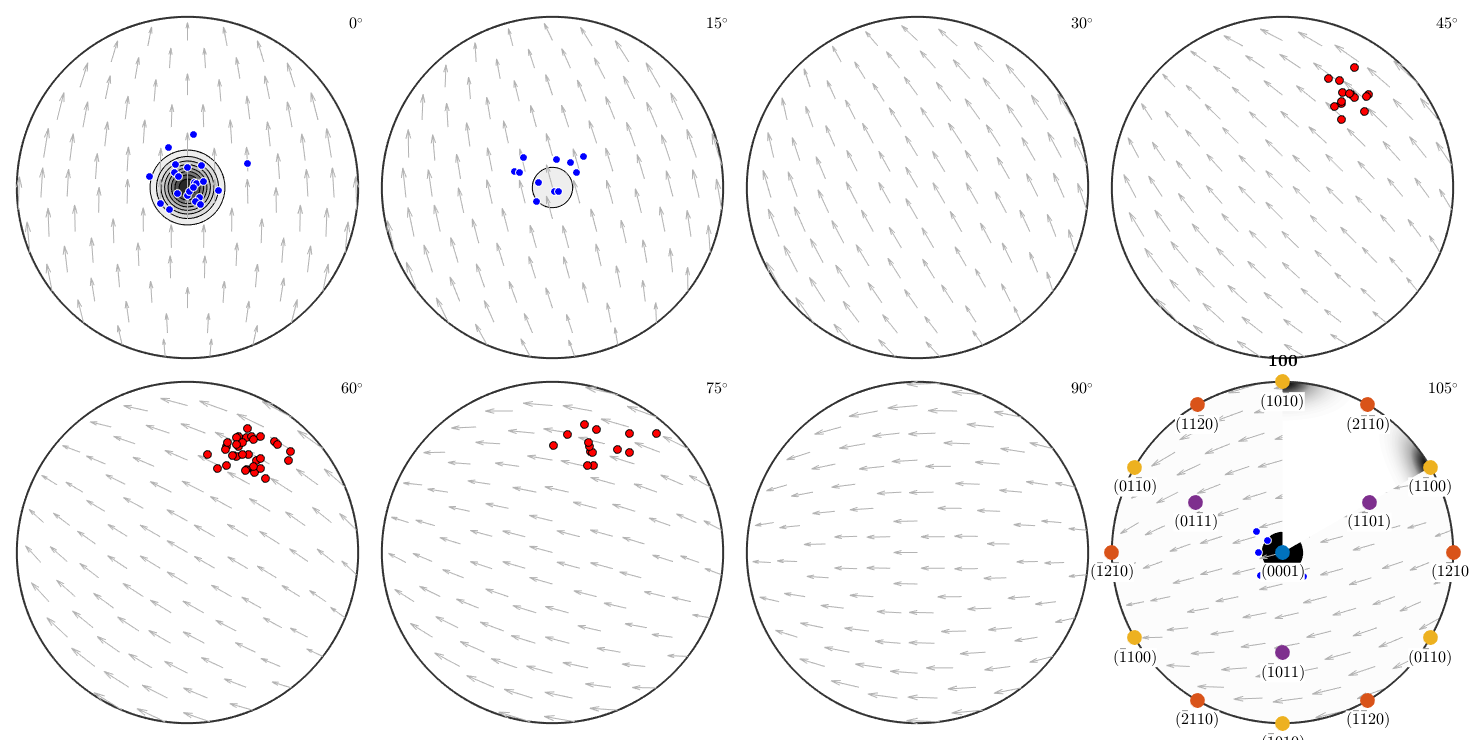
Combining different plots in one figure
The next example demonstrates how to arrange arbitrary plots into one figure
% let us import some pole figure data mtexdata dubna
next, we compute an ODF out of them
odf = calcODF(pf)
odf = ODF
crystal symmetry : Quartz (321, X||a*, Y||b, Z||c*)
specimen symmetry: 1
Radially symmetric portion:
kernel: de la Vallee Poussin, halfwidth 10°
center: 19833 orientations, resolution: 5°
weight: 1
now we want to plot the original data alongsite with the recalculated pole figures and with a difference plot
figure('position',[50 50 1200 500]) % set position 1 in a 1x3 matrix as the current plotting position axesPos = subplot(1,3,1); % plot pole figure 1 at this position plot(pf({1}),'parent',axesPos) % set position 2 in a 1x3 matrix as the current plotting position axesPos = subplot(1,3,2); % plot the recalculated pole figure at this position plotPDF(odf,h{1},'antipodal','parent',axesPos) % set position 3 in a 1x3 matrix as the current plotting position axesPos = subplot(1,3,3); % plot the difference pole figure at this position plotDiff(odf,pf({1}),'parent',axesPos)
progress: 100%

| DocHelp 0.1 beta |